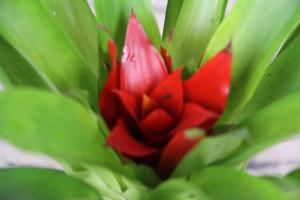How to Plant Olive Trees in Containers
Olive trees are not only prized for their fruit and oil, but also for their iconic appearance. While olive trees are native to the Mediterranean region, they can still thrive in containers in other regions with similar climatic conditions. If you’re interested in growing your own olive tree in a container, you’ve come to the right place! Follow these straightforward steps to get started.
Step 1: Choosing the Right Container
The container you use will be critical to the success of your olive tree. A good container needs to provide ample space for the tree to grow, as well as drainage holes to prevent waterlogging. Consider a container that is at least 24 inches wide and deep, as these dimensions will help your olive tree roots to spread naturally. Choose a container made of a durable, weather-resistant material such as terracotta, fiberglass or plastic.
Step 2: Preparing the Soil
Before you plant your olive tree, make sure the soil is of good quality. Olive trees can grow in almost any type of soil, as long as it is well-draining and has moderate fertility. Fill the container with a mixture of potting soil and organic matter such as compost or well-rotted manure. Add a layer of perlite or sand to increase the drainage if your soil is heavy. Make sure the soil is moist and well-packed, but not waterlogged.
Step 3: Planting the Olive Tree
Carefully remove your olive tree from its current container, being sure to keep the root ball intact. Once you have placed the root ball in the new container, fill in the space around it with soil, making sure the tree is upright and straight. Water the soil well, and add a layer of mulch to help retain moisture.
Step 4: Caring for Your Olive Tree
As with any plant, caring for your olive tree will require dedication and attention. Water your olive tree regularly, but avoid overwatering as this can lead to root rot. Pinch back new growth to encourage branching and to help your tree maintain its shape. Fertilize your tree with a balanced fertilizer in the spring and summer, but not in the fall or winter. Prune your tree in late winter or early spring, removing any dead or diseased branches.
Step 5: Protecting Your Olive Tree
Olive trees are hardy and resilient, but they can still be vulnerable to pests and diseases. Monitor your olive tree carefully, and watch for signs of infestation or disease. If necessary, treat your tree with an appropriate insecticide or fungicide. Strong winds, frost and extreme temperatures can also damage your olive tree. Move your tree indoors during the winter months to protect it from frost.
In conclusion, growing an olive tree in a container can be a rewarding and enjoyable experience. With the right container, soil, and care, your olive tree will provide decades of beauty and delicious fruit. Happy planting!

 how many times do yo...
how many times do yo... how many planted tre...
how many planted tre... how many pine trees ...
how many pine trees ... how many pecan trees...
how many pecan trees... how many plants comp...
how many plants comp... how many plants can ...
how many plants can ... how many plants and ...
how many plants and ... how many pepper plan...
how many pepper plan...





























